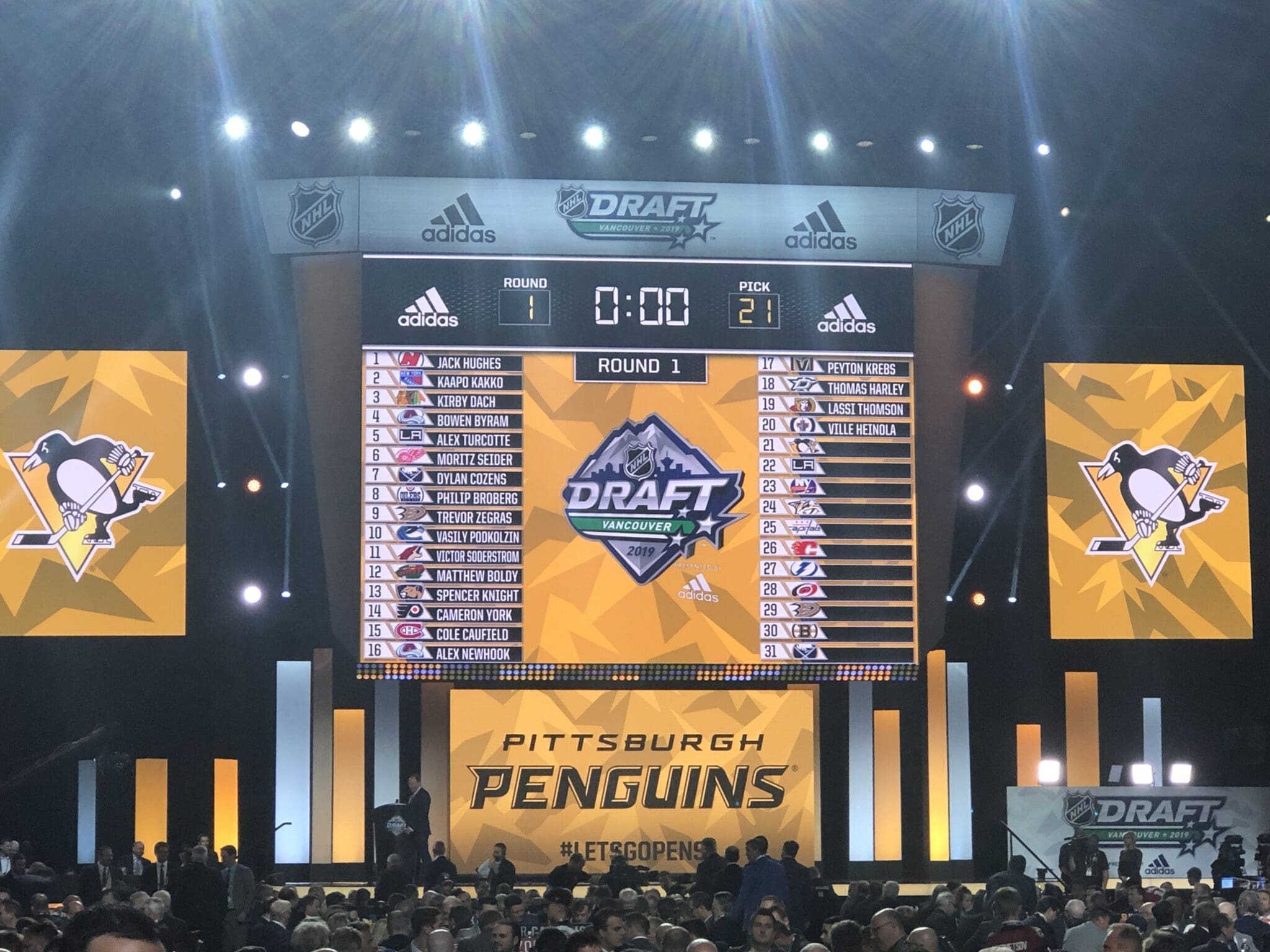2022 NHL Draft
Getting Picky: Penguins Expect to Land ‘Quality Player’ in Round 1

The Pittsburgh Penguins won’t know for several years how they truly fared in the 2022 NHL draft. which is set for July 7-8 in Montreal.
That kind of uncertainty is inherent when selecting teenaged hockey players, who tend to be far from a finished product when a pro team first secures their rights.
Even so, Nick Pryor, the Penguins’ director of amateur scouting, seems confident they will get a promising prospect with the 21st pick in the opening round.
“I think we’re pretty happy with the group of kids that we’ve got it narrowed down to,” he said. “Where we’re picking, I think we’re going to get a real quality player.”
This will be the Penguins’ first Round 1 choice since 2019, when they took Sam Poulin with the 21st selection.
Pryor, of course, did not divulge details of the Pittsburgh Penguins’ draft list — clubs are about as likely to share their ranking of prospects as they are their ownership’s personal tax returns — but left no doubt that they will claim the guy who is atop it when it’s their turn to select.
Their philosophy is to take the best player available, regardless of position, rather than trying to address an immediate need. That’s because, unlike NFL clubs, hockey teams don’t anticipate all but the most gifted draftees stepping into their lineup immediately, and personnel needs can shift significantly from one season to the next.
“The best way to go is taking the best player available,” Pryor said. “So much can change, year-to-year.
“What might be a strength of ours now could be a weakness two or three years down the road, or even longer, when whichever player we selected is ready to play at the NHL level.
“You always go in with the mindset to take the best player available at 21, regardless of position. There are lots of changes with trades and the (salary) cap and whatever it may be that we’re faced with every year.”
If, as often happens, Pittsburgh Penguins officials express surprise that the prospect they land in Round 1 still was available, they aren’t necessarily being disingenuous.
The simple truth is that, aside from the elite talents at the top of Round 1, projections of young players’ pro potential tend to diverge, often dramatically, from team-to-team. A guy one club sees as a top 10 talent might be viewed by others as a second-rounder.
“In any given year, maybe the top couple of picks are the same, or the same names, at least,” Pryor said. “But then I think it opens up pretty good and every teams’ list is going to look totally different than anybody else’s. Which is what you want.”
There is a near-consensus that the top three prospects this year are Kingston center Shane Wright, Finnish left winger Juraj Slafkovsky and center Logan Cooley, a West Mifflin native who has been with the U.S. National Development Team Program.
Although Wright was long regarded as the likely No. 1 pick, there has been a surge of support for Slafkovsky and Montreal, which owns that choice, has not revealed who it plans to take.
While Logan Cooley seems unlikely to hurdle the other two, he’s made a strong impression on Pittsburgh Penguins scouts, among many others.
“Logan is a really exciting player to watch,” Pryor said. “He keeps you on the edge of your seat because of his speed and skill and ability to create offense. He just plays the game at such a high pace. He has a lot of confidence with the puck on his stick.
“He’s just one of those players who doesn’t need a lot of time or space to make something happen. I know our whole staff enjoyed watching him all year. He’s got a real bright future.”
So do Wright and Slafkovsky, of course, although Pryor cautioned against setting expectations unrealistically high for any of them.
“You might not have the (Auston) Matthews or the (Connor) McDavids or the (Sidney) Crosbys at the top of the board,” he said. “But there are some real quality prospects who have a real good chance to have good NHL careers.”
Cooley is expected to spend at least one season at the University of Minnesota, regardless of which team selects him. Most of the players chosen after him will need even more time to get to the NHL, and the majority never will make it.
That’s part of the reason that, while team officials invariably sound optimistic at the end of every draft about the prospects they’ve added, a full and accurate assessment of a class might not be possible until sometime after the middle of the decade.
“It obviously takes these kids a lot of time (to develop), and there are going to be bumps in the road for most of them,” Pryor said. “That’s all part of the development process. But I think that in three to four years, you have a pretty good idea of what your draft looked like.”












